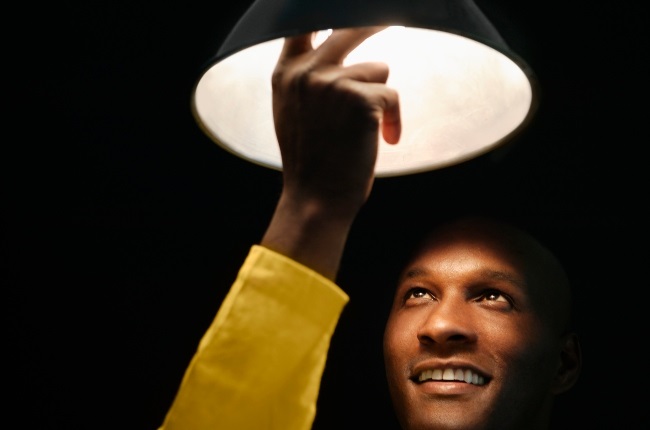
Loadshedding is back, again. This time, Eskom has announced that there will be stage 2 loadshedding until Saturday. If you don't want to stay in the dark, there are some products that keep lights and equipment on in the home when the power goes off.
But there’s so much out there, how do you know what to spend money on for backup electricity for you and your family? What would suit your needs – and what should you be wary of?
We find out more.
YOUR OPTIONS
If you need many of your lights and appliances to stay on during loadshedding, you basically have a choice between a generator and a UPS (uninterrupted power supply). If you want to invest in greater energy security for the future, you can also opt for solar-hybrid systems, but these are pretty pricey. A generator uses petrol or diesel, while a UPS is essentially a big battery. Both have pros and cons.
GENERATORS
If you want to keep most of your household appliances on, a petrol or diesel generator of 6 400 Watts (8 kilovolt-ampere or kVA) is a good choice, says Alwyn Coetsee, managing director of Turner Morris, a company that specialises in power-supply solutions.
“It’s big enough to cover most of a household’s electricity needs, excluding the geyser and the swimming pool pump,” Coetsee says.
A 6 400W generator should be able to power the moderate use of a standard stove too, Coetsee adds.
If you just want to keep some light and electronic equipment such as TVs, cellphones and computers on during outages, a 2 000W (2,5kVA) generator should suffice.
YOU MAY ALSO LIKE | 4 easy ways to save electricity during the lockdown
Take note
- “A standard generator is noisy – it sounds like a lawnmower. Some people don’t like it or they live close to others in a complex or on an estate. Many such developments have restrictions on decibel levels,” Coetsee says. “But you do get quiet generators now, purpose-made in a special container with enough air flow to keep it cool – you can barely hear it from 6m away.”
- Generators also release pollutants, so never run a generator inside the house or even in the garage – the fumes can cause carbon-monoxide poisoning. And never fill a generator with fuel while it’s running, Coetsee warns. “If petrol or diesel spill on a spark plug, the whole thing could go up in flames.”
- While it’s running, your generator needs to be outside, but you can erect a shelter against the elements for it.
What you should know
- Some generators can be connected to your main power board but be sure to have a certified electrician do this because it needs to be done right. Insist on an electrical compliance certificate.
- “Illegally connected generators can lead to malfunction which can cause a fire and affect home insurance claims,” Coetsee says.
- With loadshedding there’s been a dramatic increase in power-related products, but these can’t necessarily be legally connected to power boards. Use suppliers with a proven track record who can supply parts for years to come. A generator can last up to 20 years if you look after it well.
- “Ensure generators used during loadshedding have an AVR – automatic voltage regulator. If they don’t, they can irreparably damage electronics such as your TV or computer.”
Estimated cost
- 6 400W – R8 000 to R10 000
- 2 000W – R3 500 to R4 500
UPS SYSTEMS
A UPS consists of several rechargeable batteries (a battery bank), controller and inverter, all mounted together in a box. You can ask an electrician to connect your UPS directly to your main power board so it automatically switches on during loadshedding, and off again when the lights come back on.
Alternatively, you can use an extension cord to connect to something specific you want to stay on during loadshedding, such as your fridge. Or you can simply plug a device into the UPS.
The duration of the UPS’ operation and how long it takes to charge depends on the type of UPS, how many batteries it contains and how many devices you connect to it at one time.
“Your running time is determined by the size of the battery bank,” Coetsee says.
“The running time will be stated in the specifications. Usually it’ll say if you use 80% of the UPS’ capacity it’ll run for a specified length of time. This also determines the price.”
It’s not ideal to have a UPS with a small battery bank and a large power output.
“A lot of people will offer you a cheaper UPS, but its battery bank won’t be sufficient to run for a long time. So, the bigger the watt or kVA rating, the larger the battery bank should be,” Coetsee explains.
Take note
- A UPS of 1 600W (2kVA) is sufficient if you want to only power lights and electronics such as TVs. This will have a large enough battery bank to last for a loadshedding session.
- If you want a bigger UPS that can potentially run fridges and the rest of the household – excluding the geyser and stove – you’ll need a UPS of about 4 800W (6kVA).
- A UPS of 8 000W (10kVA) can keep the lights and electronics on for longer and are ideal for larger homes.
What you should know
A UPS is costly, but its benefit is there’s no noise and no changeover – when loadshedding kicks in, there’s no delay in power supply.
But the battery life is often limited, Coetsee warns. “A UPS often doesn’t last longer than about five years before you have to replace it.”
Estimated cost
1 600W – R15 000 to R20 000
4 800W – R60 000 and R70 000
8 000W – R100 000
POWER BANKS
A power bank can be handy when you’re stuck in darkness and your cellphone battery is running low. Charge the power bank while the electricity is still on. It has one or more UBS power points so can charge any type of cellphone or electronic devices such as tablets, MP3 music players, digital cameras and e-readers.
Estimated cost
Prices range from about R120 to R700, depending on output, capacity and number of power points.
PROTECT AGAINST POWER SURGES
Electronic devices often aren’t geared to deal with loadshedding. When the electricity suddenly comes back online, the resulting unstable power supply can damage items such as your television, decoder and computer. Although power surges don’t happen automatically, it’s their unpredictability that leads many people to safeguard their devices.
Surge arrestor plugs that you plug into the wall and connect your devices to are valuable and cost-effective as they absorb the spikes and dips that could damage your electronics during loadshedding, says Orlando Luis, executive director of Brights hardware chain.
“But they’re limited to handling a few spikes only till they can’t absorb any more and need to be replaced. Your incoming supply before your main switch is connected to it and it relays the surge away from your appliances.
“For peace of mind many customers use both, especially on expensive electronics.”
Estimated cost
The price of surge protection plugs ranges from about R8 for a double plug to R365 for a multiplug with sockets for 12 devices. Installing a surge and lightning arrestor costs between R5 000 to R8 000.
KEEP THE LIGHTS ON
There are a variety of battery-operated rechargeable lighting systems on the market and many run on solar power.
“Any rechargeable battery LED lantern, lamp or torch is a solution during loadshedding,” says Orlando. “Some plug into existing lamp holders in ceiling fittings or desk lamps and automatically switch over to their built-in battery during loadshedding.
“Step two would be to convert other light fittings to solar powered LED versions with day/night and motion sensors. That would remove your dependency on Eskom as the lights get their power from a battery built into the light fitting that gets charged during sunshine hours.
“So lights don’t even need a cable connection to your distribution board.”
These days there really are a multitude of solar power and rechargeable LED light products available and “all are good, cost-effective solutions”, Orlando says.
Estimated cost
Solar power lanterns cost about R190 and a solar power desk lamp R315.
COMPUTER AND INTERNET CONNECTIVITY
Small UPS devices can keep your computer and internet running during loadshedding – simply connect them to your computer or modem.
Smaller UPS units work well for computers, tablets, cellphones, internet connection and TVs during loadshedding, says Orlando. “They can last for two to four hours, depending on the number of batteries and how many electronic devices need to connect.”
Estimated cost
They cost between R500 and R2 800, depending on their power output and running time. A 600W UPS with one battery can cost about R4 500.
COOK UP A STORM
You can run your stove on a generator or even a biggish UPS system, but a gas stove is a much better option. “Cooking and heating are the two biggest power guzzlers in the home,” says Orlando.
“If you use appliances that don’t need any power, such as gas stoves, heaters and geysers or solar geysers, it means the supporting power source, such as a generator, needs less capacity – which means you can pay less to refuel it.”
Stoves, fridges and other household appliances with a good energy efficiency rating – such as AAA+ – can make a significant difference with their lower power consumption.
In a nutshell, a gas stove makes enormous sense if you’re tired of having sandwiches for supper.
Estimated cost
You can get quite a handy four-plate gas hob for about R2 200 or a one or two-plate gas burner for between R250 and R350.
Options that won’t hurt your pocket
- During loadshedding turn your fridge into a cooler box. When the electricity is on, freeze ice packs and as many as water-filled containers as possible, then transfer them to the fridge during power outages.
- Turn down the geyser thermostat to 55 or 60°C and get a geyser blanket. All these things will help to heat your bath more quickly after loadshedding plus save power to boot.
- Replace all older technology electric bulbs with LEDs. A 5W LED gives as much light as a 50W bulb. This way you could reduce your lighting bill up to tenfold.
- Take a shower instead of a bath. Not only does this save water, it saves electricity too.



















